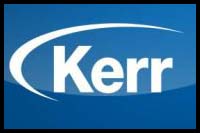
Multiple federal service dental clinics have reported that mercury is being released from Kerr amalgam capsules during trituration. Users have reported droplets of mercury in the mixing chambers of their triturators and some have actually witnessed mercury ejection during trituration. This problem was first identified to the USAF Dental Investigation Service (DIS) in August 1997 and was the subject of a lengthy DIS Problem Resolution Assistance Program (PRAP) investigative action that was completed in April 1998. During this PRAP action, DIS confirmed with Kerr Corporation sources that a defective amalgam capsule design existed that was responsible for the mercury release.
It was also revealed that mercury release during trituration has been an ongoing problem with these capsules.
The mercury release was replicated and confirmed in the DIS dental material testing laboratory. Recently, Kerr has redesigned its amalgam capsules in order to remedy the problem. In addition, Kerr has suggested that the use of their proprietary amalgam capsule activator instead of hand activation will reduce/eliminate mercury release.
Since the close of the PRAP action, DIS has received additional reports of mercury release from Kerr capsules.
DIS has examined the capsules exhibiting mercury release and has found that some are of the new design that was purported to have solved the mercury release problem. DIS testing has confirmed mercury release from these newer capsules by testing in our laboratory regardless of whether the proprietary capsule activator was used or not.
The Kerr Corporation confirms that problems still exist with mercury release from its capsules and is attempting to further modify the capsule design and capsule assembly to correct the problem.
Kerr has stated that it will not assume responsibility for damages incurred from the use of its capsules beyond capsule replacement.
Federal clinics should be aware that mercury release from Kerr capsules is still both a real and potential problem. Mercury release during trituration has been demonstrated in each of Kerr’s amalgam products (Tytin, Tytin FC, and Contour).
Dental clinics may unknowingly experience accumulative mercury leakage within triturators until the leakage amounts become overtly evident. Presently, Kerr has no tracking mechanism to identify potentially defective capsules.
Base Bioenvironmental Engineering policy states that decontamination costs are borne by the agency that owns the product (i.e., the dental clinic). DIS has also discovered that no peer-reviewed mercury decontamination protocol exists for amalgamators. DIS has received reports from federal clinics that local attempts to clean contaminated amalgamators have been labor intensive and largely unsuccessful. An outside contractor quoted one federal facility a fee in excess of $2000 to attempt to decontaminate three amalgamators. It should be noted that no known Occupational Safety and Health Administration thresholds have been breached in the breathing zones of both dental personnel and patients.
In view of the aforementioned information, it is recommended that federal dental clinics exercise caution in the use of Kerr amalgam products until the mercury release problem has been rectified and should consider an alternative capsule design. Suitable replacement spherical alloys are commercially available for local purchase and include Lojic+ (Southern Dental Industries), Megalloy (Dentsply/Caulk), and Valiant (Ivoclar). Currently, only Valiant has a National Stock Number listing (NSN 6520-00-149- 0132 and 6520-00-149-0123).
Questions and further information may be addressed to Lt Col Howard Roberts at DSN 240-3502, (210) 536-3502, or roberts@alaoc.brooks.af.mil.
